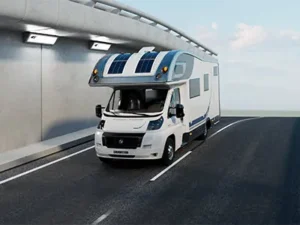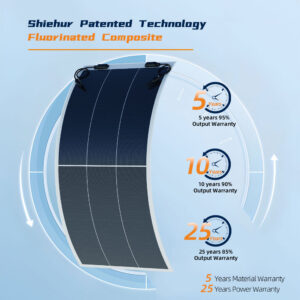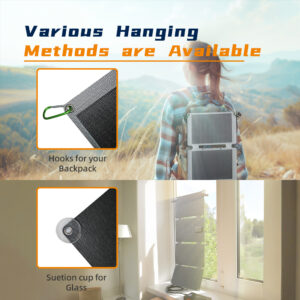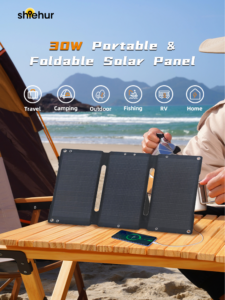Different Types of Solar Panels
If you’re considering solar energy, you’ve probably noticed there are several types of to choose from. Each type offers its own advantages, efficiencies, and applications. In this blog, we’ll break down the most common types of solar panels, helping you understand which one is best suited for your needs. Let’s dive into the three main types of solar panels: monocrystalline , polycrystalline, and thin-film.
1. Monocrystalline Solar Panels
Monocrystalline solar panels are often regarded as the premium option due to their high efficiency and sleek design. These panels are made from single-crystal silicon, which allows electrons to flow more freely, resulting in better energy conversion.
Key Benefits:
- High Efficiency: Monocrystalline panels boast the highest efficiency rates, typically ranging from 17% to 22%, making them ideal for areas with limited roof space.
- Long Lifespan: These panels are known for their durability, often coming with warranties of 25 years or more.
- Aesthetic Appeal: Monocrystalline panels are usually black, making them blend more easily with most rooftops, giving them a modern, minimalistic look.
Best Use Case:
Monocrystalline panels are perfect for homeowners who want maximum efficiency and have limited roof space. They are also a top choice for commercial installations where energy output is a priority.
2. Polycrystalline Solar Panels
Polycrystalline solar panels are made from silicon crystals as well, but instead of using a single crystal, manufacturers melt multiple silicon fragments together. This process is more cost-effective, but it results in slightly lower efficiency compared to monocrystalline panels.
Key Benefits:
- Cost-Effective: Polycrystalline panels are cheaper to produce, which makes them a more affordable option for homeowners on a budget.
- Good Performance: While they are less efficient than monocrystalline panels, polycrystalline panels still provide solid performance, with efficiency rates typically ranging from 15% to 17%.
- Eco-Friendly Production: The manufacturing process generates less waste, making these panels a more environmentally friendly option.
Best Use Case:
If you’re looking for a balance between price and performance and have enough roof space to accommodate slightly larger panels, polycrystalline solar panels can be a great choice for residential or commercial installations.
3. Thin-Film Solar Panels
Thin-film solar panels are a newer technology and differ significantly from crystalline silicon-based panels. These panels are made by depositing thin layers of photovoltaic material—such as cadmium telluride (CdTe) or amorphous silicon—onto a substrate like glass, metal, or plastic.
Key Benefits:
- Flexibility: Thin-film panels are lightweight and flexible, which opens up possibilities for unique applications, such as on curved surfaces or portable solar products.
- Low Light Performance: These panels perform better in low-light conditions or cloudy weather compared to traditional crystalline panels.
- Lightweight: Thin-film panels are much lighter than their crystalline counterparts, making them easier to install on large-scale projects.
Drawbacks:
- Lower Efficiency: Thin-film panels have lower efficiency, usually around 10% to 12%, which means they require more space to generate the same amount of energy as crystalline panels.
- Shorter Lifespan: These panels tend to have a shorter lifespan and may need replacement sooner than monocrystalline or polycrystalline options.
Best Use Case:
Thin-film solar panels are ideal for large-scale commercial projects where space is abundant, or for portable and flexible solar solutions, such as solar backpacks or RV panels.
4. Bifacial Solar Panels (Bonus)
Bifacial solar panels are a unique type of solar technology that captures sunlight on both sides of the panel. This allows them to produce more energy by utilizing light that reflects off the ground or surrounding surfaces.
Key Benefits:
- Higher Energy Output: Bifacial panels can generate up to 30% more energy than traditional single-sided panels, depending on their placement and the reflectivity of the installation surface.
- Durability: These panels are often designed with a glass back, making them more durable and resistant to environmental wear and tear.
Best Use Case:
Bifacial solar panels are great for commercial installations, especially when installed on reflective surfaces like white roofs or gravel. They’re also increasingly used in solar farms to maximize energy production.
Which Solar Panel Is Right for You?
Choosing the right solar panel depends on your energy needs, budget, and installation space. Here’s a quick recap:
- Monocrystalline Solar Panels: Best for maximum efficiency and limited roof space.
- Polycrystalline Solar Panels: Best for a balance between cost and performance.
- Thin-Film Solar Panels: Best for unique applications like flexible or portable solar solutions.
- Bifacial Solar Panels: Best for maximizing energy output in large-scale, commercial settings.
Final Thoughts
As the solar industry continues to grow, more innovations are making solar panels more efficient and accessible. By understanding the different types of solar panels, you can make an informed decision that aligns with your specific energy goals and budget. Whether you’re a homeowner, business owner, or installer, there’s a solar panel type that’s just right for your project.
If you’re ready to take the next step toward clean energy, reach out to a solar provider to discuss which type of panel will best suit your needs. Going solar is not just an investment in your property—it’s an investment in a sustainable future.







